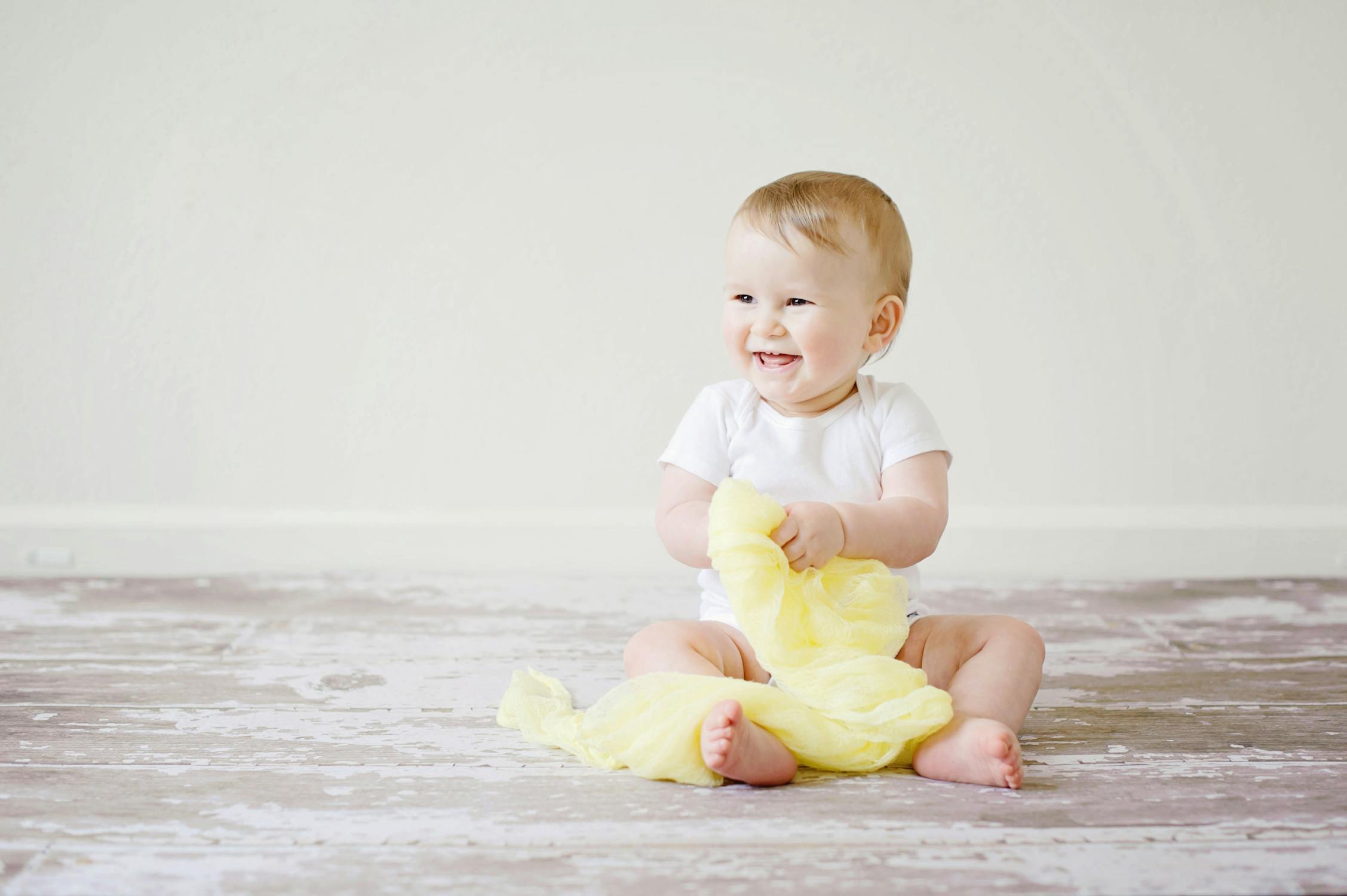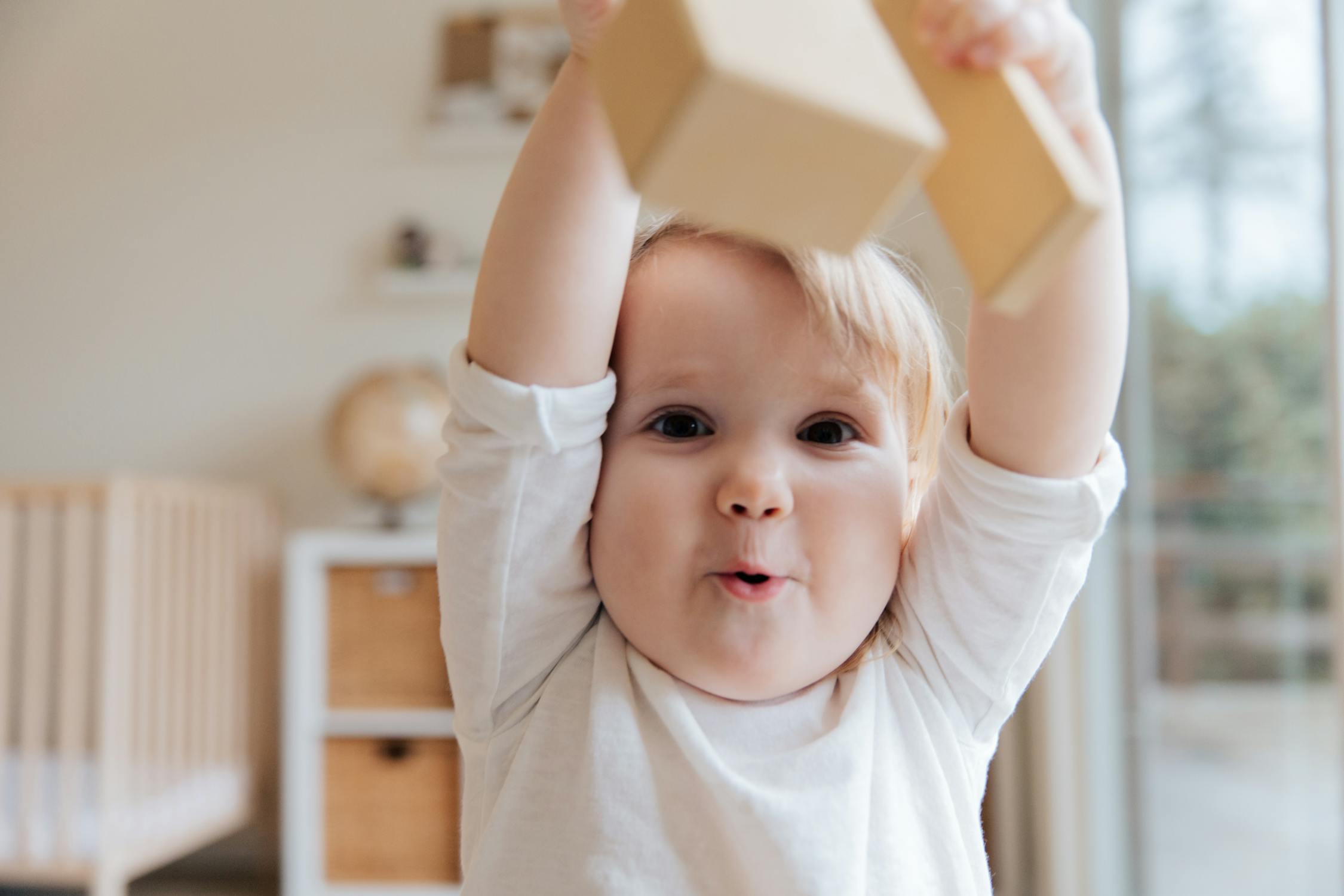Early baby development can sometimes surprise us, as was the case with Samantha Mitchell’s newborn daughter, Nyilah Daise Tzabari. Born three weeks late on February 27, 2023, at 43 weeks gestation, Nyilah weighed 7 pounds, 6 ounces. Just two and a half days after birth, she amazed her mother by lifting her head and attempting to crawl in her hospital cot. Samantha, a first-time mom from White Oak, Pennsylvania, captured this extraordinary moment on video, exclaiming, “Mum, she’s crawling! This is unbelievable!” Her mother, also present, responded in astonishment, “She should not be this strong already.” Samantha shared, “I’ve babysat most of my life and have over 20 years’ experience with children and I’ve never seen anything like this before.” This remarkable display of strength left both mother and grandmother in complete shock.
How One Baby’s Video Left the Internet Speechless

After Samantha shared the clip of Nyilah lifting her head and moving in her hospital cot, people online were stunned. It wasn’t just a sweet newborn video—it was something most parents and even medical professionals rarely see. Comments poured in from shocked viewers, many asking, “Is that even possible at three days old?” Some suggested she might be the next Olympic gymnast, while others simply called it a “miracle baby.” Samantha admitted she didn’t post the video expecting a big reaction, but it went viral almost overnight. Viewers were fascinated not only by the physical movement but by how alert Nyilah seemed. With wide eyes and clear responses to her surroundings, she looked more like a one-month-old than a newborn. The video sparked a mix of amazement, curiosity, and even some gentle disbelief—but one thing was clear: this little girl had made a serious first impression.
Typical Developmental Milestones in Newborns

Understanding early baby development helps put such extraordinary events into perspective. Typically, newborns begin to lift their heads briefly by the end of the first month. By around two months, they can hold their heads up and start pushing up when lying on their tummy. At three months, babies usually gain better head control and can lift their heads and chests during tummy time. Crawling generally starts between six to ten months. Therefore, Nyilah’s actions at just a few days old are exceptionally advanced. However, it’s important to remember that each baby’s development can vary, and some may reach these milestones earlier or later than others. Let’s take a look at what basic baby development looks like!
1-2 Months: Early Baby Development Milestones

In the first couple of months, babies begin to show subtle but meaningful signs of early baby development. During this time, many infants attempt to lift their heads briefly while lying on their stomachs. Though still wobbly, these early efforts help build the muscles needed for future movement. You’ll also notice babies starting to fix their gaze on faces, especially their caregivers’. This visual connection helps them feel safe and begin recognizing familiar people. Around this age, babies also begin reacting to sounds by turning their heads or quieting down. Simple vocal noises like cooing begin to emerge as their first form of verbal expression. These little sounds are their way of experimenting with their voice. Early baby development at this stage sets the stage for bigger milestones in the months ahead.
3-4 Months: Gaining Control and Engaging with the World

At three to four months, babies begin to gain more control over their bodies. Many can now roll from their tummy to their back with increasing ease. This new movement helps them explore their environment and enjoy tummy time more. Sitting with support also becomes possible, giving them a whole new view of the world. You’ll likely see more social interaction—babies at this age smile frequently and may laugh when playing with familiar people. They also become fascinated with their own hands and start reaching out to grab toys. Their hand-eye coordination improves quickly, helping them connect with the things around them. At this stage, interaction and communication grow more expressive and playful.
5-6 Months: Building Strength and New Sounds

In the five- to six-month range, babies start becoming more physically stable. They can usually roll over both ways and may sit without help for a few seconds. Their balance is improving, and they love to explore by reaching out for nearby toys. Around this time, babbling begins—expect to hear a lot of “ba” and “da” sounds, though they’re not specific words yet. You might also notice them transferring toys from one hand to the other. This shows improved coordination and control. Their curiosity grows stronger every day, especially when it comes to different textures and sounds. They may also begin responding to their name, showing early recognition skills.
7-9 Months: Becoming More Mobile and Aware

Between seven and nine months, babies often start crawling, scooting, or moving in other creative ways. They usually sit confidently without support and can pivot to reach toys. Their understanding grows rapidly—they may respond when you say “no” or call their name. You’ll likely see them copying gestures, such as clapping, waving, or pointing. This is a fun age because they love interacting with people and enjoy back-and-forth play. They also begin to show preferences, like reaching for favorite toys or showing affection to certain people. Their fine motor skills improve too, letting them pick up smaller objects with more precision. This period is full of exciting, hands-on learning.
Read More: 15 Baby Names Texas Doesn’t Allow
10-12 Months: First Steps Toward Independence

By ten to twelve months, many babies start standing while holding onto furniture and may begin “cruising” along it. Some even take their first unassisted steps. They also start using words like “mama” or “dada” with clear intent. Communication becomes more intentional—they might wave goodbye or point to something they want. You’ll see them exploring constantly, often opening cabinets, pulling things out, and examining how they work. They also enjoy simple problem-solving activities, like putting blocks into containers. Emotional expression becomes stronger too, with babies showing frustration, joy, or excitement in obvious ways. This is a big leap toward toddlerhood.
12-18 Months: Walking, Talking, and Exploring

Between one year and 18 months, walking becomes a regular activity. Many children at this stage are already moving confidently on their own. Language also takes a leap, with several spoken words and growing vocabulary. You might hear words like “ball,” “bye-bye,” or “milk” used appropriately. Simple games like peekaboo or shape-sorting become favorites. They enjoy pointing to body parts when asked and often mimic adult behaviors. Social skills begin forming as they play near other children or show affection to family members. Expect plenty of energy and a growing sense of independence.
18-24 Months: From Toddler to Talker

In the 18- to 24-month range, toddlers are on the move. They can run, climb stairs with help, and love to explore independently. Their vocabulary grows quickly, and they start combining two-word phrases like “more juice” or “go outside.” Following basic instructions becomes easier, and they often understand more than they can say. Pretend play begins to take shape—feeding a doll or pretending to talk on the phone are common. Fine motor skills improve as they build towers with blocks or turn book pages. Social interaction expands too; toddlers may show empathy or respond to the emotions of others. This is a key stage for emotional and cognitive growth.
Understanding Nyilah’s Early Development

Nyilah’s early baby development showcases how individual differences can manifest even in infancy. Some newborns exhibit strong reflexes and muscle tone shortly after birth, which may be instinctual responses rather than deliberate actions. Factors such as genetics and prenatal conditions can influence a newborn’s physical abilities. Samantha noted that Nyilah was very alert from day one, saying, “From day one her strength was very shocking to us.” While such early development is uncommon, it falls within the range of normal variability. As Nyilah has grown, her development appears to be normal. That doesn’t stop Samantha from continuing to make lighthearted jokes about Nyilah’s potential genius on TikTok. Honestly, with a baby that cute, how could you not want to show her off to the world?
Read More: Woman Adopts Husband’s Deceased Ex-Wife’s Baby to Keep Him Out of Foster Care
Celebrating Each Baby’s Unique Journey

Every baby’s early development is unique, and variations in reaching milestones are normal. Samantha expressed her amazement at Nyilah’s progress, saying, “Without a doubt, she will start walking soon. She stands at the moment. She puts so much weight on her legs.” Providing a nurturing environment, engaging in interactive play, and offering ample opportunities for movement can support healthy development. Celebrating each achievement, no matter how small, fosters a positive environment for growth. It’s essential to be patient and supportive as the baby explores and learns new skills. Remember, each child’s developmental journey is unique and should be embraced.

